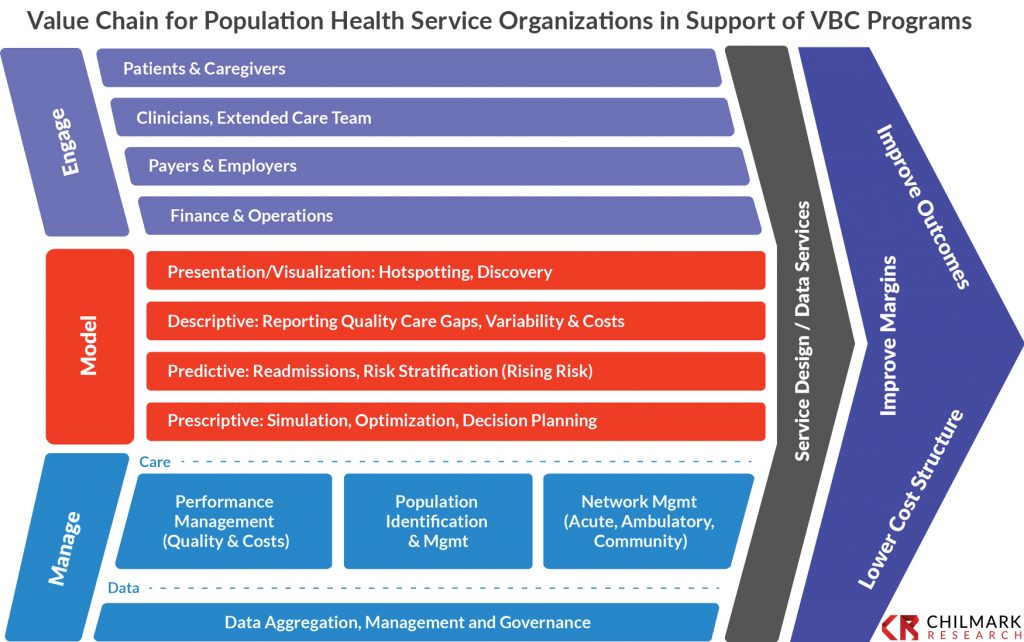A Path to Value for Population Health: Adopting a Value Chain Model
Healthcare executives help inform a new model for defining PHM value
Today, the expansion of various value-based care contracts all have one thing in common: shifting the financial risk of patient care from payers to providers. Increasingly, healthcare organizations are recognizing that an effective population health management (PHM) strategy is business-critical to define and operationalize this shift to value-based economics.
While the specific definition and scope of PHM means different things to different people, and continues to evolve, for the purposes of this report, we define PHM as:
The proactive management of the health of a given population by a defined network of financially linked providers in partnership with community stakeholders (e.g., social workers, visiting nurses, hospice, patient, caregivers/family, etc.).
This report is based on a web survey of healthcare executives leading PHM initiatives at their organizations and three focus group sessions with this senior healthcare organization leadership. The purpose of the survey and focus group sessions was to understand how participants derived value out of their population health management and value-based contract activities.
Our results show that the path to value for PHM infrastructure investments – to support new VBC models of care – is still very much in its infancy. Even organizations that we found to be at the pinnacle of strategic intent and maturity have yet to define a clear ROI for their PHM investments to date, though they do feel that value has been created and ROI will be demonstrable within the next couple of years. Using the input from these focus groups, we are pleased to introduce a new value chain model for PHM initiatives:
Regardless of where your organization is on the adoption and maturity curve for PHM/VBC, there are five critical components defined in this report that require close and continuous attention to ensure long-term success: Lead, Organize, Engage, Communicate, and Monitor & Optimize. To see how to apply these insights to your own organization, complete the form and we'll send you a copy of this free report.
Number of pages: 28
Published: January 2020
Cost: FREE (thanks to generous support from the research sponsor)


